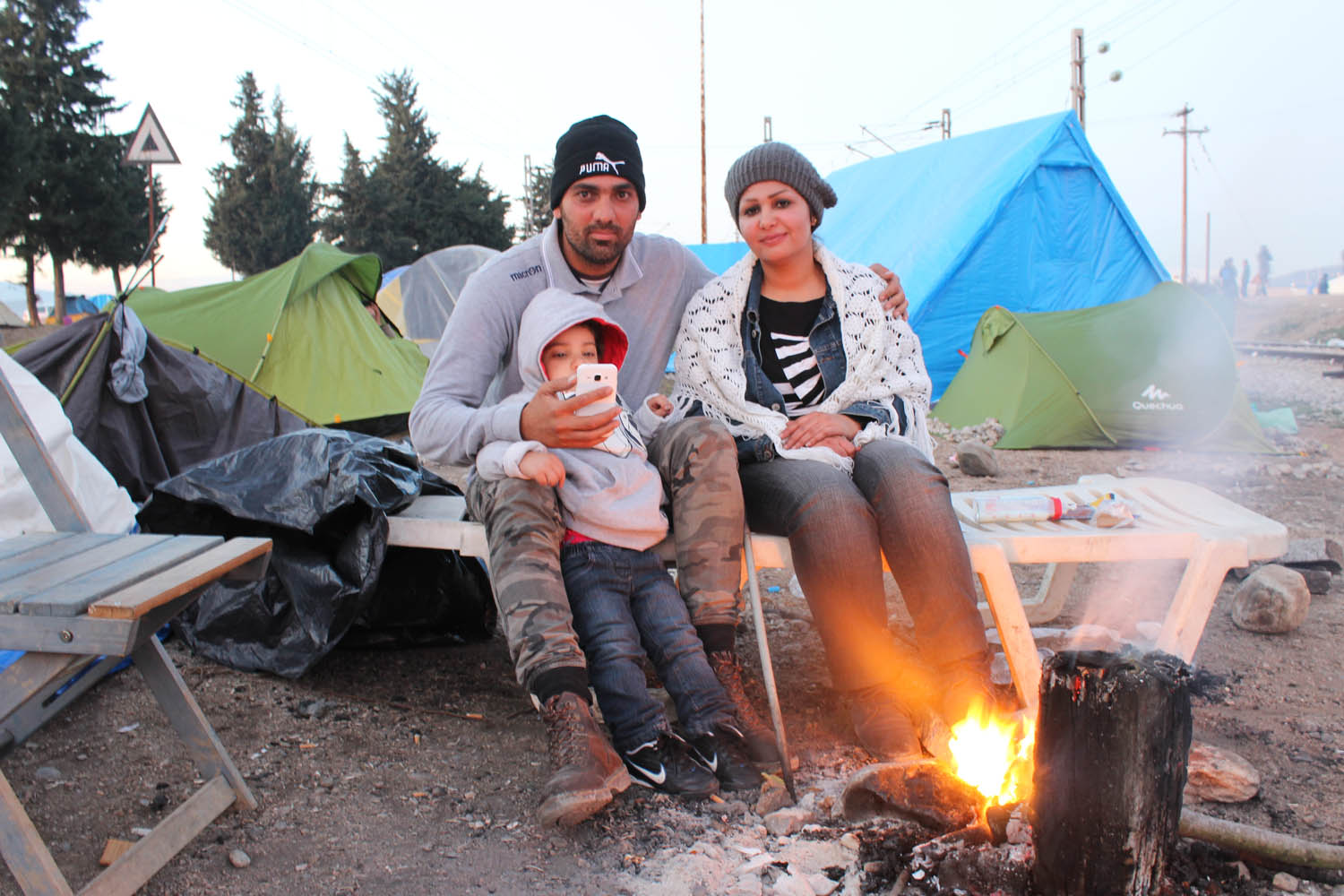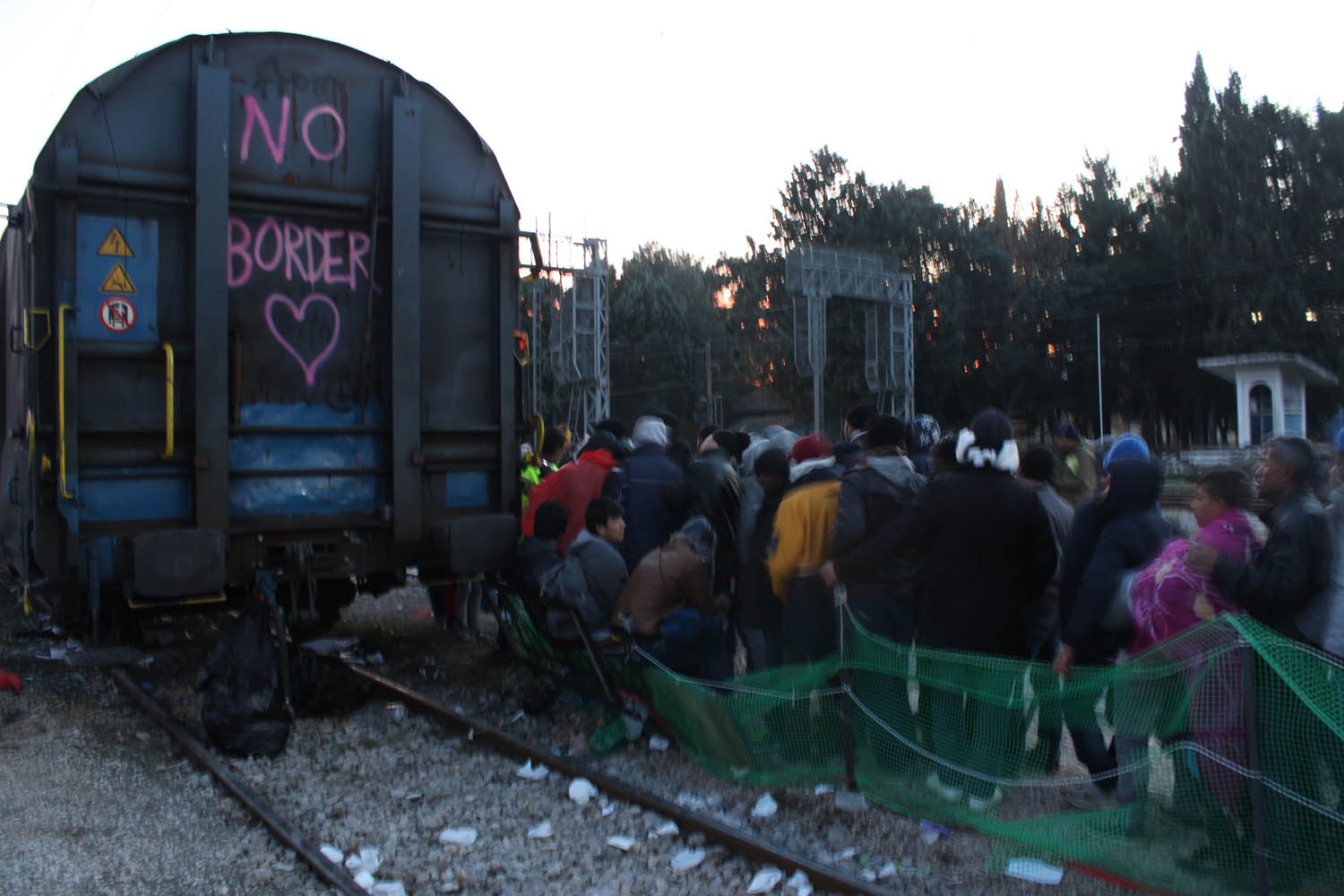An Artificial Crisis?
– The absence of a collective EU decision to ensure safe access to migrants, coupled with the creation of obstacles which make refugees’ journeys as burdensome as possible, are the two factors predominantly responsible for the current chaos. Failure to create legal channels of entry for refugees has precipitated an unsustainable situation. Current arrangements between countries to control their borders have proven ineffectual in the face of a tide of persons who are truly desperate. The EU’s relocation scheme for refugees who are already inside its borders represents a gesture of solidarity between Member States (as a burden-sharing measure), not towards refugees themselves. As such, efforts and investments should be made to facilitate secure and safe legal access for refugees.
– The lack of an integrated global approach has occasioned the development of an artificial humanitarian crisis that could have been avoided if a workable plan of action were put in place. Namely, one that protects refugees’ needs and rights, enables the development of safe migration channels, reduces the market for smugglers/traffickers, and facilitates resettlement. The entire transit process of refugees needs to be more rational, avoiding unnecessary, extended and precarious journeys on foot, and facilitating connections between means of transport along different European borders. 
– The arbitrary decision to limit authorisation for border crossings with respect to persons of concern belonging to any nationality other than Iraqis, Syrians and Afghans raises questions of equity and is potentially dangerous. This too has prompted an unsustainable situation. MSF explains, “Europe’s restrictive policies mean that we put some of the world’s most vulnerable people in more danger”. While large numbers of economic migrants are likely to distort the picture, a significant number of rights holders and persons of concern are already adversely affected. It is imperative to develop tools and mechanisms to ensure that persons of concern belonging to other nationalities, beyond the three selected by European states, are adequately taken into account and that specific CwC and messaging is developed for them. It is necessary to clarify their aspirations and the ways by which they may claim their rights.
– UNHCR’s role is key for encouraging the development of an integrated data system from origin to destination, while respecting each transit state’s regulations. Building such data into a more comprehensive system would facilitate the tracking of specific vulnerable cases and allow the patterns needed for adapting programming to be clearly defined. A system based on a mobile platform could be envisaged in this regard.
– Adequate tools need to be developed to identity refugees’ specific needs, establish timely differentiation between vulnerable groups on the move (such as unaccompanied minors and children separated from their guardians; women and girls at risk; the elderly or persons with disabilities, etc.). Cross border mechanisms for the referral of different groups, in order to ensure appropriate and timely follow-up, must be improved to make these fully operational.
– Further creative efforts should be pursued to spread accurate and credible information to refugees. This should involve sharing information in modes of transportation, e.g. trains or buses, a protection hotline with various interpreters, and a proper outreach campaign.
– Efforts to develop alternative, accepted and credible platforms to respond to refugees’ information needs should continue. Partnership between UNHCR, humanitarian actors and professional communications agencies, such as the BBC or Al Jazeera, should be encouraged.
– Humanitarian actors should analyse and “socialise” with refugees’ and migrants’ networks, without compromising their safety and security, feeding them with reliable information and encouraging two-way communication. They should also coordinate with aid workers and local NGOs which are already feeding refugees with information through their own social media platforms, webpages and volunteers. As UNHCR has underscored: “it is important to capitalise on existing community networks and information flows to meet the information and communication needs of a heterogeneous moving population.”
– To strengthen the response, it is vital to involve refugees in the solutions pursued to alleviate the crisis. A consultation system is advisable, which could be implemented through social networks and on-site (for instance, through easy-to-use questionnaires and feedback forms in select waiting areas).
– There is a pressing need for more effective expectations’ management. Refugees should know what they can expect when they reach their final destination, in terms of rights but also in terms of housing, access to jobs, etc. They need to receive a more realistic picture of life on the ground. This information should be made available in a credible way, using testimonies from other refugees, social networks and popular information platforms.
– The selective entry procedures at all major borders between Greece and Slovenia threaten to further encourage the development of alternative clandestine routes by smugglers, mainly through Bulgaria. This will result in significant protection concerns and increase the need to develop an appropriate CwC strategy geared towards affected migrant populations. The main objective thereof should be to provide them with accurate humanitarian information, to inform them of the risks they are exposed to, and to establish communications channels which allow meaningful two-way communication.
This refugee crisis is often described as the first one of the digital era. Dahlia will continue to investigate how refugees and migrants have been using mobile technologies, computer applications and social media on the move. Further research on this topic will be carried out and shared in 2016.
1 A Dahlia team carried out a mission to the Balkans between the 1st and 5th of December, 2015. The mission constitutes a follow-up of Dahlia’s first rapid assessment carried out in October 2015. On this occasion, the mission visited border crossings in Serbia, Bulgaria, Macedonia and Greece, and met with local and international organisations present in the field. Dahlia’s team reviewed the current situation in the region, with a particular interest in information and communications with affected populations (CwC) related to the flow of refugees. Dahlia verified facts on the ground, reviewed progress on information and communications efforts, identified key challenges and considered joint approaches with respect to the different stakeholders involved.
2 UNHCR (2015) Refugees/Migrants Emergency Response – Mediterranean. Available at: http://data.unhcr.org/mediterranean/regional.php3 Belgrade Center for Human Rights report: “Safe Passage Testimony of people arriving in Dimitrovgrad, Serbia from Bulgaria”. http://www.bgcentar.org.rs/bgcentar/eng-lat/wp-content/uploads/2015/12/Safe-Passage1.pdf. Also Oxfam and Helsinki Committee for Human Rights in Sofia





